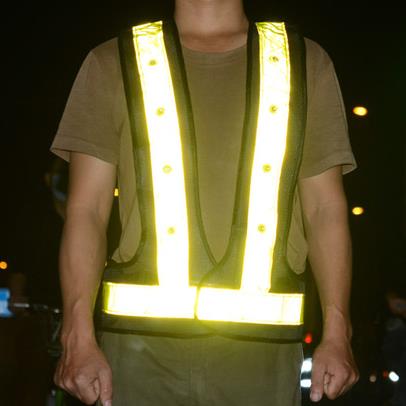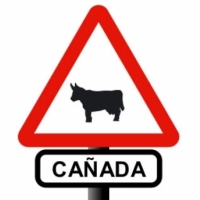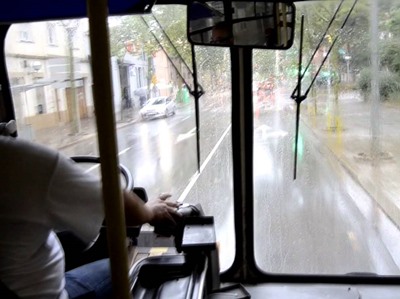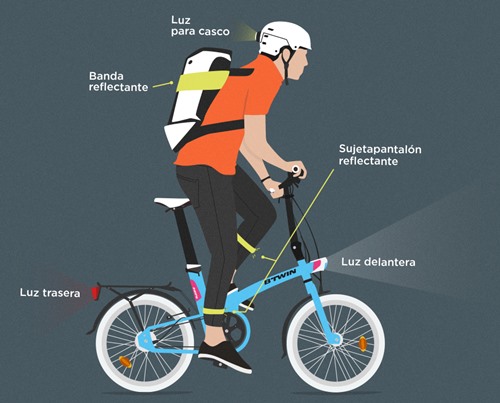Chapter 11: Other Users
第 11 章:其他用户
11.1 Preventive driving 11.1 预防性驾驶
| 1. VISION 1. 愿景 | 2. ANTICIPATION 2.预测 | 3. SPACE MANAGEMENT 3.空间管理 |
| Look ahead and to the sides. 向前看,向两边看。 Look farther at higher speeds. 高速行驶时要看得更远。 Look at the rear-view mirrors. 看看后视镜。 Control blind spots by turning the head 45 degrees. 通过将头部转向 45 度来控制盲点。 | Anticipate the movements of other users. 预测其他用户的动向。 Signal your manoeuvres in advance. 提前发出机动信号。 |
Safety distance: 安全距离 - When driving - 驾驶时
|
The area of uncertainty is a safety space around the vehicle which covers the front, rear and especially the sides, where any road user could move unexpectedly. E.g. a cyclist can turn right quickly.
不确定区域是车辆周围的安全空间,包括车头、车尾,尤其是车身两侧,任何道路使用者都可能在此发生意外移动。例如,骑自行车的人可能会迅速右转。
Among the various road users: don’t surprise, don’t disturb and be understanding.
对于不同的道路使用者:不要惊奇,不要打扰,要理解。
11.2 Use of the road
11.2 道路的使用
Pedestrians must travel: 行人必须出行:
- Within a locality, on the right or left
在一个地区内,在右边或左边 - Outside of a locality and on cross roads, to the left. If in a group, wheelchair or pushing a moped or cycle, they may travel on the right
在小区外和十字路口,靠左行驶。如果是集体出行、坐轮椅或推轻便摩托车或自行车,可靠右行驶 - At night: approved reflectors visible from 150 metres
夜间:经批准的反光镜,150 米外可见 - Forbidden to cross roundabouts, must always walk around them
禁止穿过环形交叉路口,必须始终绕行 - Prohibited to travel on motorways and dual carriageways
禁止在高速公路和双车道上行驶

Animals: 动物
- Should travel on designated animal crossings
应在指定的动物通道通行 - Forbidden to go on the motorway and dual carriageway, including animal-drawn vehicles
禁止上高速公路和双车道,包括畜力车 - At night animal drivers must have a white front light and a red light in the rear
夜间,动物驾驶员必须在前方亮白灯,在后方亮红灯

Large vehicles: 大型车辆:
- Impede traffic flow and visibility
妨碍交通和能见度 - Must pay attention to the length while overtaking
超车时必须注意长度 - They usually have a wide windscreen, which will emit large amounts of water in case of rain
它们通常有一个宽大的挡风玻璃,下雨时会喷出大量的水

2-wheeled vehicles: 两轮车辆:
- Motorcycles, mopeds and quads: Helmet is mandatory for drivers and passengers. The driver is responsible for helmet use throughout the vehicle. If the motorcycle has a self-protective structure, you only need to use the seatbelt. Headlights day and night.
摩托车、轻便摩托车和四轮摩托车:驾驶员和乘客必须佩戴头盔。驾驶员有责任在全车范围内使用头盔。如果摩托车有自我保护结构,则只需使用安全带。昼夜都要开大灯。 - Bicyclists: Helmet is mandatory for cyclists only outside of town, except in extreme heat and with steep slopes. When riding at night, must have a reflector visible from 150 metres. At night, must have a white front light and a red light in the rear.
骑自行车者:在城外骑车必须戴头盔,酷暑和陡坡除外。夜间骑车时,必须安装 150 米外可见的反光镜。夜间骑车时,前灯必须为白色,后灯必须为红色。

11.3 Adjusting the seat and controls
11.3 调节座椅和控制器
1. Incorrect position causes fatigue and tension.
1.位置不正确会导致疲劳和紧张。
2. The seat and seat back allow the driver to reach the pedals and steering wheel with slightly bent legs and arms.
2.座椅和椅背允许驾驶员在腿部和手臂略微弯曲的情况下够到踏板和方向盘。
3. Clutch: 3.离合器
- ENGAGED = OUT OF GEAR = No motor movement is transmitted to the wheels
挂挡 = 脱挡 = 电机运动不传递到车轮 - NOT ENGAGED = IN GEAR = Motor movement is transmitted to the wheels
未接合 = 齿轮传动 = 电机运动传递到车轮
4. Steering wheel: Held firmly and simulating a clock with hands marking 10 minutes to 2 or quarter to 3.
4.方向盘:紧握方向盘,模拟时钟,指针显示 10 分钟到 2 点或 1/4到 3 点。
5. Gearbox: To change gear, it will be necessary to engage the clutch.
5.变速箱:换挡时,需要接合离合器。
- Low gear (First): Low speed, but with great power and increased consumption.
低速档(一档):速度低,但功率大,耗油量增加。 - High gear (Fifth or sixth): High speed, but with little power and less consumption.
高挡(五或六):速度高,但动力小,消耗少。
6. Turn signals: After performing a manoeuvre, they should be turned off.
6.转向灯:操作后应关闭转向灯。
7. Brakes: 7.制动器:
- Service (foot brake): Acts on all 4 wheels
辅助(脚刹):作用于所有 4 个车轮 - Parking (hand brake): Usually acts on the rear wheels
驻车(手刹):通常作用于后轮
11.4 Groups at risk of accidents
11.4 有发生事故风险的群体
YOUNG DRIVERS: 年轻的驾驶员
- Majority of fatal accidents, between ages 15 and 19
大多数致命事故发生在 15 至 19 岁之间 - Less experience and perception of risk
缺乏经验和风险意识 - Usually more alcohol and drug consumption
通常酗酒和吸毒较多 - Drive faster 驾驶速度更快
- Their main cause of accidents is not respecting traffic rules
他们发生事故的主要原因是不遵守交通规则 - More accidents at night, at dawn, during summer, holidays, weekends and on the route back and forth from work
夜间、黎明、夏季、节假日、周末和上下班途中的事故较多
ELDERLY DRIVERS: 老年司机:
- They are more likely to have accidents caused by the loss of their physical and mental faculties
他们更容易因丧失体力和智力而发生意外 - Visual/auditory field is smaller, and mobility is less accurate
视觉/听觉区域更小,移动准确性更低 - They consume more medication
他们消耗更多的药物 - They are more sensitive to complicated traffic situations
他们对复杂的交通状况更加敏感
PEDESTRIANS: 行人:
- In the city, hitting pedestrians are the accidents which produce the most victims
在城市中,撞击行人是造成最多受害者的事故 - The elderly and children are the most vulnerable
老人和儿童最容易受到伤害 - They constantly commit infractions (cross where they shouldn’t, run traffic lights, etc.)
他们经常违规(横穿马路、闯红绿灯等)。 - You should never give signals for them to cross
千万不要打信号让他们过马路
CHILDREN: 孩子们
- Not familiar with road rules and this causes them to get hit more often
不熟悉道路规则,导致他们被撞得更频繁 - Short stature limits their peripheral visual field
身材矮小限制了他们的周边视野 - Develop the ability to locate the source of sounds beginning at age 7
从 7 岁开始培养寻找声音来源的能力 - Confuse seeing with being seen
将看见与被看见混为一谈 - The height of most vehicles makes the car strike them on the head in an accident
大多数车辆的高度都会在发生事故时击中他们的头部
CYCLISTS: 自行车
- More accidents on conventional highways, especially on weekends
常规公路上的事故增多,尤其是在周末 - The most common accident is frontal collision
最常见的事故是正面碰撞 - They turn incorrectly or travel in the opposite direction
转向错误或行驶方向相反 - Avoid giving them acoustic signals (so as not to startle them)
避免向它们发出声音信号(以免惊吓到它们) - Wearing a helmet reduces the chance of head injury 3 times
戴头盔可将头部受伤的几率降低 3 倍
MOPEDS AND MOTORCYCLES: 轻便摩托车和摩托车
- The responsibility for accidents is shared with the other vehicle drivers
事故责任由其他车辆驾驶员共同承担 - Injuries are more severe because the driver always takes the hit, as their body acts as the chassis
由于驾驶员的身体充当底盘,因此总是受到撞击,因此受伤情况更为严重 - They are less stable, more fragile and less visible
它们不那么稳定、脆弱,也不那么显眼 - Wearing a helmet reduces the likelihood of head injuries up to three times
佩戴头盔可将头部受伤的可能性降低三倍之多




